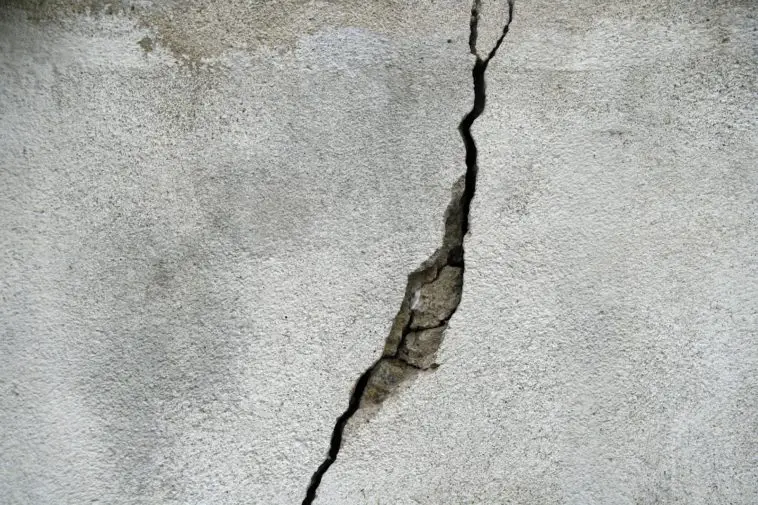Are you having trouble with concrete around your home? Like most homeowners, you probably don’t overthink about your concrete until there’s a problem. And when that problem arises, it can be tough to know how to fix it! This blog post will discuss eight tips for fixing common concrete problems. We’ll cover everything from cracks and chips to stains and sealants. So whether your driveway is looking a little worse for wear or your patio has seen better days, read on for the best ways to get your concrete back in shape. Let’s get started.
Concrete Lifting and Leveling
It can be a major nuisance if you have sunken or uneven concrete. Not only is it unsightly, but it can also create trip hazards. Also, water can accumulate in sunken areas, leading to further damage. The good news is that there are companies that specialize in concrete lifting and leveling. For instance, if you live in the United States, concrete lifting services in Maryland will help you fix your problem quickly and efficiently. This process involves drilling small holes into the afflicted area and injecting polyurethane foam material.
Concrete lifting and leveling are best suited for small areas of sunken concrete. If you have a large area that needs to be repaired, you may consider another option, such as mudjacking. However, you can work with experts to determine the best solution for your specific needs.
Stain Removal
If you have a stain on your concrete, it’s essential to act quickly. The longer the stain sits, the harder it will be to remove. You’ll also want to identify the type of stain so that you can use the appropriate cleaners and removal methods. For instance, a degreaser can remove oil stains, while rust stains may require an acidic cleaner.
Many commercial cleaners are available, but you can also use household items such as vinegar or baking soda. Just test the cleaner in an inconspicuous area before using it on the stain. Also, always be cautious when working with cleaners, as they can be harmful if misused.
Crack Repair
Concrete cracks are unsightly and can worsen over time. Fortunately, there are a few different methods you can use to repair cracks. The best method will depend on the size of the crack and its location. For small cracks, you can use caulk or concrete repair kits. These kits have everything you need to fill the crack, including the filler material and a putty knife.
You’ll need to use hydraulic cement for larger cracks, which is available at most hardware stores. To use this method, wet the area around the crack and then apply the cement. Ensure that you fill the crack, as any voids will only allow water to seep in and worsen the problem. Once the cement is dry, you can paint or stain it to match the surrounding area.
Sealant Application
If your concrete is starting to show signs of wear and tear, you may want to consider applying a sealant. This will help protect the concrete from stains, water damage, and other types of wear. There are many different types of sealants available, so be sure to choose one best suited for your specific needs.
Sealant application is a relatively simple process, but it’s essential to follow the instructions carefully. In most cases, you’ll need to clean the concrete surface and then apply the sealant with a brush or roller. Once the sealant is dry, you can enjoy your newly protected concrete surface. Ensure that you re-seal the surface every few years to keep it looking its best.
Re-Staining and Re-Sealing
If your concrete has seen better days, you may want to consider re-staining or re-sealing it. This will help restore its original luster and protect it from further damage. The process is similar to that of stain removal, except you’ll be applying the stain or sealant rather than removing it.
As with any project, read the instructions carefully before getting started. In most cases, you’ll need to clean the concrete surface and then apply the stain or sealant with a brush or roller. Once the material is dry, you can enjoy your newly updated concrete surface. It is also essential to ensure that you re-seal or re-stain the surface every few years to keep it looking its best.
Mudjacking
Mudjacking is similar to concrete lifting and leveling, but it uses different materials to fill the holes. Instead of polyurethane, mudjacking uses a slurry of concrete and water. This mixture is injected into the holes, filling them and lifting the concrete back to its original level.
Mudjacking is an excellent option for those who want to avoid polyurethane injections or need to repair a large area. However, it is essential to note that mudjacking is a more invasive process and can be quite messy. It is also essential to have a professional Mudjack in the area to ensure it is done properly. If possible, work with a company that specializes in concrete repair.
Concrete Repair Kits
If you’re looking for a quick and easy way to fix small cracks or holes, you may consider using a concrete repair kit. These kits have everything you need to fill the crack or hole, including the filler material and a putty knife. You might also get a concrete floor polisher, which makes the surfaces look better.
Concrete repair kits are available at most hardware stores and can be an excellent option for those who want to avoid using hydraulic cement or sealant. However, it is essential to note that these kits may not be able to fix large cracks or holes. If you’re unsure if a concrete repair kit will be able to fix your problem, it’s always best to consult with a professional.
Hiring a Professional to Replace Your Concrete
If your concrete is severely damaged, you may need a professional to replace it. This is typically a last resort option, as it can be quite costly. However, hiring a professional may be your best option if your concrete is beyond repair.
When hiring a professional to replace your concrete, be sure to get multiple estimates. This will help to ensure that you’re getting the best possible price for the job. It’s also essential to ask for references and check the company’s Better Business Bureau rating.
Many different options are available to those who need to repair their concrete. Be sure to choose the option that is best suited for your specific needs. In most cases, you’ll be able to fix the problem yourself. However, if the damage is severe, you may need to hire a professional. Ensure that you get multiple estimates and ask for references before hiring anyone to work on your concrete.



